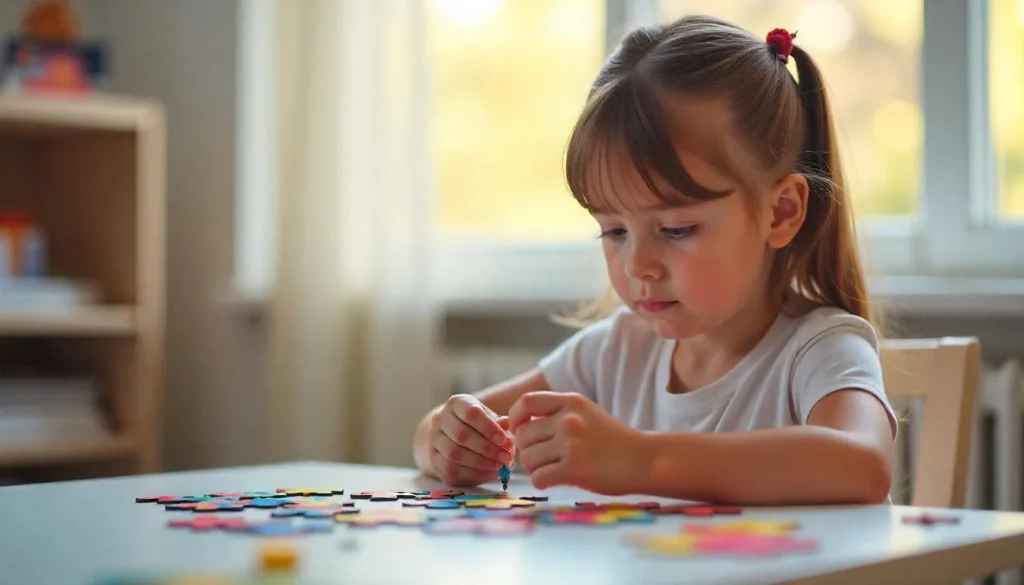When researching brain health, cognition, and behavioral disorders, everyone asks, how is autism different from dementia? Although both dementia and autism consist of cognitive disabilities, they are distinct in their presentation, affect different groups, and require disparate methods of care and support. In this comprehensive guide, we will clarify the differences, mention similarities, and allow you to better comprehend how to identify, support, and manage these disorders effectively.
What is the Difference Between Autism and Dementia: A Basic Overview
Before going further,let’s define autism and dementia separately to understand better their basic differences.
Autism Defined
Autism,also known as Autism Spectrum Disorder (ASD), is a neurodevelopmental disorder that exists since early childhood.
It affects communication, social interaction, behavior, and sensory processing.
Symptoms are generally noticeable before three years of age and continue all through a person’s life.
Dementia Defined
On the contrary, dementia is not a disease for an individual but a descriptive name for a group of diseases with progressive deficiencies of their mental powers. Dementia primarily strikes people in advanced years, and it results in getting worse of memory, thought, reasoning, and the ability to carry out routine tasks. The most common type of dementia is Alzheimer’s disease, although vascular dementia, Lewy body dementia, and frontotemporal dementia also happen frequently.
Key Differences Between Autism and Dementia
Autism and dementia have their differences discussed below by comparing multiple dimensions such as age of onset, symptoms, course, and underlying mechanisms.
Age of Onset
One of the key distinguishing factors between autism and dementia is the age of onset:
- Autism: Typically diagnosed in early childhood, sometimes even as early as three years old
- Dementia: Usually develops in older adults, most commonly after age 65.
Nature of Progression
The progression of symptoms distinguishes these conditions significantly:
- Autism: Typically stable; symptoms and behaviors can be enhanced with interventions but do not increasingly worsen.
- Dementia: Increasing and degenerative;symptoms increasingly worsen over time,substantially impairing cognitive functioning.
Symptoms and Cognitive Profiles
Symptoms and cognitive profiles vary greatly between autism and dementia:
Autism Symptoms
- Challenges with social interaction
- Challenges with communication
- Repetitive behavior or limited interests
- Sensory processing challenges
Dementia Symptoms
- Short-term memory loss
- Trouble with performing daily activities
- Language and communication challenges
- Disorientation in space and time
- Changes in mood and behavior
The comprehension of these differences is helpful for accurate diagnosis, treatment, and management plans.
Causes and Risk Factors
A consideration of what is the difference between autism and dementia also includes a consideration of their respective causes and risk factors:
Causes of Autism
- Genetic reasons
- Environmental factors during prenatal life
- Neurological abnormalities
Causes of Dementia
- Age-related neurodegenerative processes
- Vascular conditions such as strokes
- Abnormal protein accumulation (e.g., amyloid plaques)
- Genetic susceptibility (more so in Alzheimer’s)
To comprehend what is the difference between autism and dementia,one must consider several dimensions including age of onset,symptoms,course,and underlying mechanisms.
Shared Similarities of Autism and Dementia
Albeit distinct,autism and dementia both share certain similar cognitive as well as behavioral issues,namely:
- Social interaction issues
- Difficulties with communication
- Sensory sensitivity
- Cognitive processing issues
Despite these similar characteristics,their causes,paths,and treatment plans differ largely.

Autism vs. Dementia: Diagnosis Criteria
Making a determination about what is the difference between autism and dementia requires knowledge of special diagnostic criteria:
Diagnosing Autism
- Lasting impairments in social interaction and communication
- Repetitive behavior or restrictive interests
- Onset of symptoms during early childhood
- Impairment in daily functioning
Diagnosing Dementia
- mpairment of memory
- Decline in cognitive functions affecting daily life
- Gradual development and progressive course
- Diagnosis confirmed by cognitive tests, brain imaging, and clinical assessment
Why It’s Important to Distinguish Autism from Dementia
Proper distinction between autism and dementia is critical in:
- Personalized intervention and treatment plans
- Optimal social support networks
- Proper care planning and resource distribution
- Enhanced quality of life for the person and caregivers
Management Strategies for Autism and Dementia
Recognizing what is the difference between autism and dementia also informs optimal management strategies:
Managing Autism
- Behavioral interventions (e.g., Applied Behavior Analysis)
- Communication interventions (speech therapy)
- Sensory integration occupational therapy
- Structured environments and routines
Managing Dementia
- Cognitive stimulation activities
- Memory care programs
- Pharmacological treatments (for symptom management)
- Environmental modifications to improve safety and comfort
Preventative Measures and Risk Reduction
Though prevention of autism remains in elusive ground as it has developmental and genetic roots,risk to dementia can be prevented by:
- Regularity in exercise
- Mental stimulation (brain training)
- Healthy diet (Mediterranean diet)
- Social interaction and involvement in activities from the community
Control of vascular and metabolic disease (hypertension, diabetes)
Future Research Directions
Both autism and dementia are subjects of ongoing research,with more studies exploring potential links between them.Current evidence suggests:
- Autistic adults are more likely to have dementia
- The same brain scan findings in both conditions point to shared neurological pathways
- Further research is required to know fully connections and implications
Supporting Individuals and Families
Effective support involves education,resources,and community engagement.Families dealing with dementia or autism are supported by:
- Access to specialist healthcare
- Support groups and counseling
- Education resources
- Community inclusion programs

